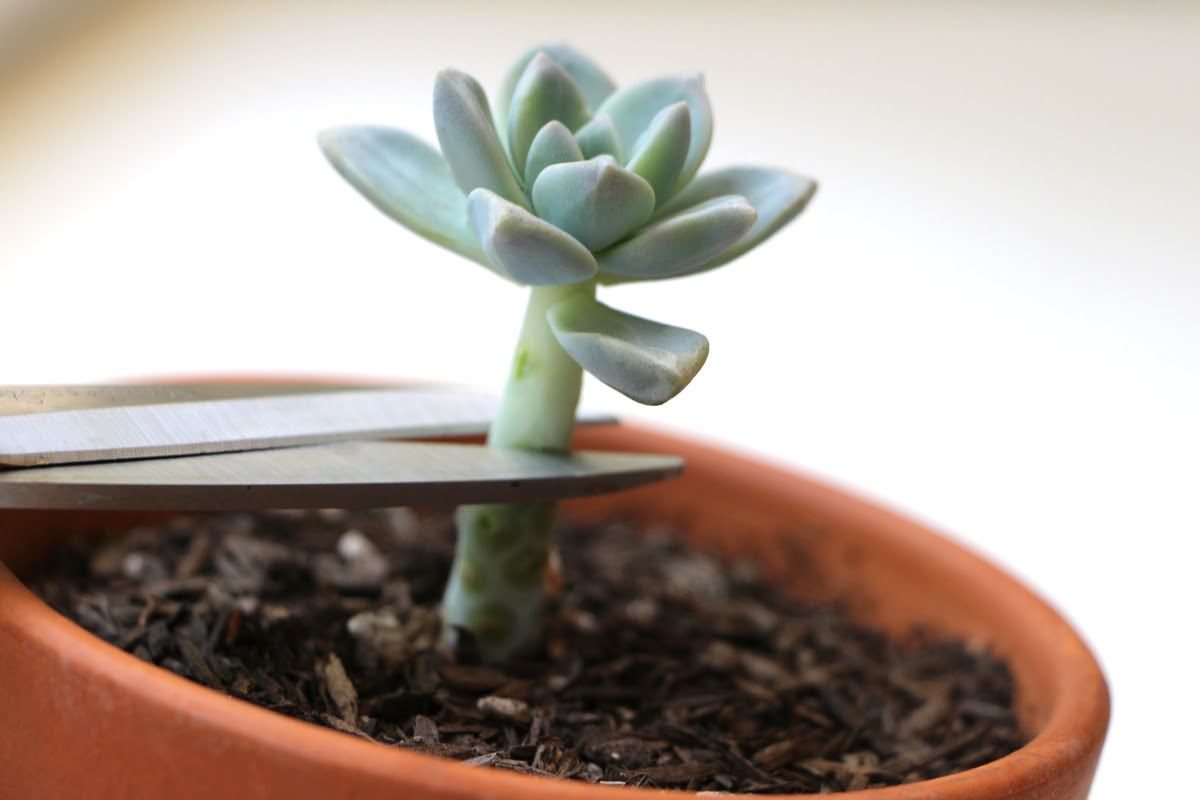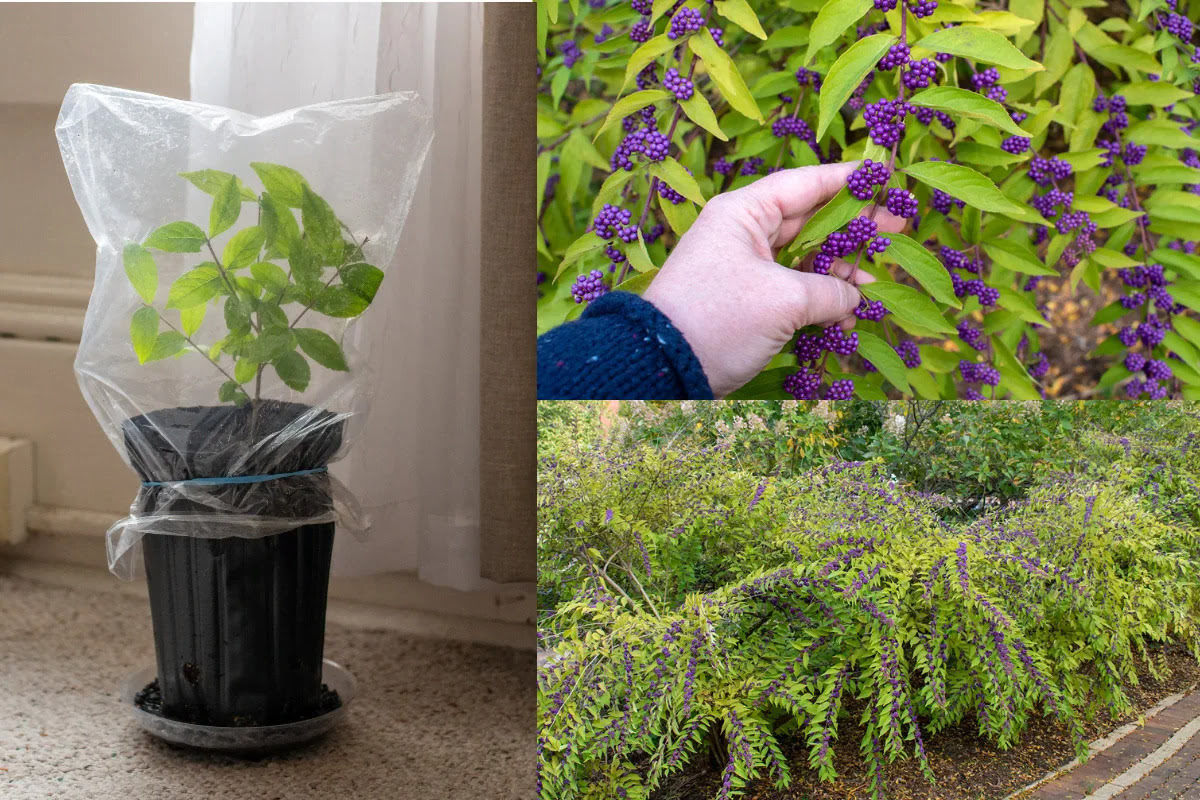Home>Gardening Tips and Tricks>Maximizing Yield>Where To Cut Tradescantia For Propagation


Maximizing Yield
Where To Cut Tradescantia For Propagation
Published: February 3, 2024
Learn how to maximize your yield by knowing where to cut Tradescantia for propagation. Follow these tips to increase your plant propagation success.
(Many of the links in this article redirect to a specific reviewed product. Your purchase of these products through affiliate links helps to generate commission for Chicagolandgardening.com, at no extra cost. Learn more)
Table of Contents
Introduction
Are you a plant enthusiast looking to expand your green oasis? Or perhaps you're a novice gardener eager to delve into the world of plant propagation? Either way, if you have a fondness for the beauty and versatility of Tradescantia, you're in for a treat! In this comprehensive guide, we will explore the art of propagating Tradescantia, a stunning and resilient plant known for its vibrant foliage and easy-care nature.
Whether you're drawn to the striking purple hues of the Tradescantia pallida, the variegated charm of Tradescantia fluminensis, or the classic appeal of Tradescantia zebrina, learning how to propagate these beauties will not only expand your plant collection but also provide an immensely rewarding experience. Propagation allows you to create new plants from existing ones, fostering a deeper connection with nature and the satisfaction of nurturing life from a tiny cutting.
As we journey through the fascinating world of Tradescantia propagation, you'll gain valuable insights into the best practices for nurturing healthy cuttings and fostering their growth. By the end of this guide, you'll be well-equipped to embark on your propagation adventure with confidence, armed with the knowledge to ensure the success of your Tradescantia cuttings. So, without further ado, let's dive into the captivating realm of Tradescantia propagation and discover where to make the perfect cut for optimum results.
Understanding Tradescantia
Before delving into the intricacies of propagating Tradescantia, it’s essential to develop a deeper understanding of this remarkable plant genus. Also known as spiderwort or wandering jew, Tradescantia encompasses a diverse array of species, each possessing its own unique charm and characteristics. These plants are renowned for their vibrant, variegated foliage, making them a popular choice for both indoor and outdoor settings.
One of the most appealing attributes of Tradescantia is its adaptability, thriving in various environmental conditions and displaying remarkable resilience. Whether you opt for the rich purples of Tradescantia pallida, the elegant silver stripes of Tradescantia zebrina, or the lush green and white hues of Tradescantia fluminensis, these plants are sure to captivate with their visual allure.
Tradescantia species are characterized by their trailing or clumping growth habits, making them ideal candidates for hanging baskets, ground cover, or decorative pots. Their low-maintenance nature further enhances their appeal, making them an excellent choice for both seasoned gardeners and beginners alike.
When it comes to propagation, Tradescantia presents a wonderful opportunity for plant enthusiasts to expand their collection and share the beauty of these plants with others. By understanding the unique traits and growth patterns of Tradescantia, you can tailor your propagation approach to suit the specific needs of each species, ultimately maximizing the success of your propagation endeavors.
Now that we’ve gained a deeper appreciation for the captivating nature of Tradescantia, it’s time to unravel the art of propagation and discover the optimal locations for making precise cuts to propagate these stunning plants.
Where to Cut Tradescantia for Propagation
When it comes to propagating Tradescantia, identifying the ideal location to make the cut is paramount to the success of your propagation efforts. The process of creating new plants from cuttings, also known as vegetative propagation, relies on the ability of the cutting to develop roots and establish itself as an independent plant. By strategically selecting the cutting location, you can optimize the plant’s ability to root and flourish, ensuring a seamless transition from cutting to thriving plant.
For Tradescantia propagation, the most favorable location to make the cut is at the nodes. Nodes are the points on the stem where leaves, aerial roots, or lateral branches emerge. These vital sites harbor the potential for root development, making them the optimal choice for taking cuttings. When selecting a stem for propagation, look for a healthy, mature stem with several sets of leaves and well-defined nodes.
Using a clean, sharp pair of scissors or pruning shears, make a precise cut just below a node, ensuring that the cutting is at least 2-3 inches in length. This length provides an adequate portion of stem for rooting while maintaining the necessary foliage to support the cutting during the propagation process. By making a clean cut just below the node, you encourage the emergence of new roots from this critical point, setting the stage for successful propagation.
It’s important to note that Tradescantia stems have the remarkable ability to root readily in water, making water propagation a popular and effective method for initiating root growth. Placing the cuttings in a container of water, ensuring that the nodes are submerged while the leaves remain above the waterline, creates an optimal environment for root development. Once the roots have sufficiently developed, the cuttings can be transitioned to a suitable growing medium to continue their growth journey.
By understanding the significance of node selection and making precise cuts, you can harness the inherent potential of Tradescantia to propagate with ease and success. Now that we’ve uncovered the ideal locations for making cuts, let’s explore essential tips to ensure the prosperity of your Tradescantia cuttings as they embark on their propagation adventure.
Tips for Successful Propagation
Embarking on the journey of Tradescantia propagation is an exciting endeavor, and implementing key tips can significantly enhance the success of your propagation efforts. Whether you’re a seasoned plant enthusiast or a novice gardener, these valuable insights will empower you to nurture healthy cuttings and witness the remarkable transformation of your Tradescantia as it takes root and flourishes.
- Optimal Environmental Conditions: Create an environment conducive to root development by providing adequate warmth, humidity, and indirect light. Maintaining a consistent temperature and ensuring the cuttings are shielded from direct sunlight will foster an ideal setting for root initiation.
- Regular Monitoring: Keep a watchful eye on the cuttings, monitoring their progress and ensuring the growing medium remains consistently moist but not waterlogged. This attentive approach allows you to address any issues promptly, promoting the healthy development of the cuttings.
- Humidity Enhancement: To elevate humidity levels around the cuttings, consider covering them with a transparent dome or placing them in a greenhouse-like environment. This protective measure helps prevent excessive moisture loss and promotes favorable conditions for root establishment.
- Rooting Hormone Application: Consider using a rooting hormone to encourage the development of robust roots. This optional step can expedite the rooting process and enhance the overall vigor of the cuttings, increasing the likelihood of successful propagation.
- Appropriate Growing Medium: When transitioning the rooted cuttings to a growing medium, opt for a well-draining, nutrient-rich soil mix to support their continued growth. A blend of peat moss, perlite, and vermiculite provides an excellent foundation for the establishment of healthy root systems.
By incorporating these tips into your propagation approach, you’ll be well-equipped to nurture thriving Tradescantia cuttings and witness the fulfillment of their potential. The journey from a humble cutting to a flourishing plant is a testament to the remarkable resilience and adaptability of Tradescantia, and your role in nurturing this transformation is both rewarding and enriching.
Conclusion
As we conclude our exploration of Tradescantia propagation, we have unveiled the art of nurturing new plants from cuttings, delving into the optimal locations for making precise cuts and essential tips for fostering successful propagation. The journey of propagating Tradescantia is a testament to the remarkable adaptability and resilience of these plants, and by understanding their unique traits and growth patterns, we can embark on this propagation adventure with confidence and enthusiasm.
From identifying the ideal cutting locations at the nodes to creating a nurturing environment for root development, each step in the propagation process plays a pivotal role in fostering the growth and vitality of the cuttings. As plant enthusiasts, we have the privilege of witnessing the transformation of a humble cutting into a thriving plant, a testament to the beauty and wonder of nature’s resilience.
By embracing the tips for successful propagation, including optimizing environmental conditions, regular monitoring, humidity enhancement, rooting hormone application, and selecting appropriate growing mediums, we can provide the cuttings with the best possible foundation for growth. This attentive and nurturing approach reflects our dedication to fostering life and celebrating the inherent beauty of Tradescantia.
As you embark on your propagation journey, may you find joy in nurturing and witnessing the growth of your Tradescantia cuttings, and may each new leaf and tendril serve as a testament to the success of your propagation endeavors. Whether you’re expanding your plant collection, sharing the beauty of Tradescantia with others, or simply reveling in the marvel of plant propagation, your role in nurturing life is both meaningful and fulfilling.
As we part ways, armed with newfound knowledge and enthusiasm for Tradescantia propagation, may your green oasis flourish with the vibrancy and resilience of these remarkable plants, serving as a testament to the art of propagation and the beauty of nurturing life from a tiny cutting.



